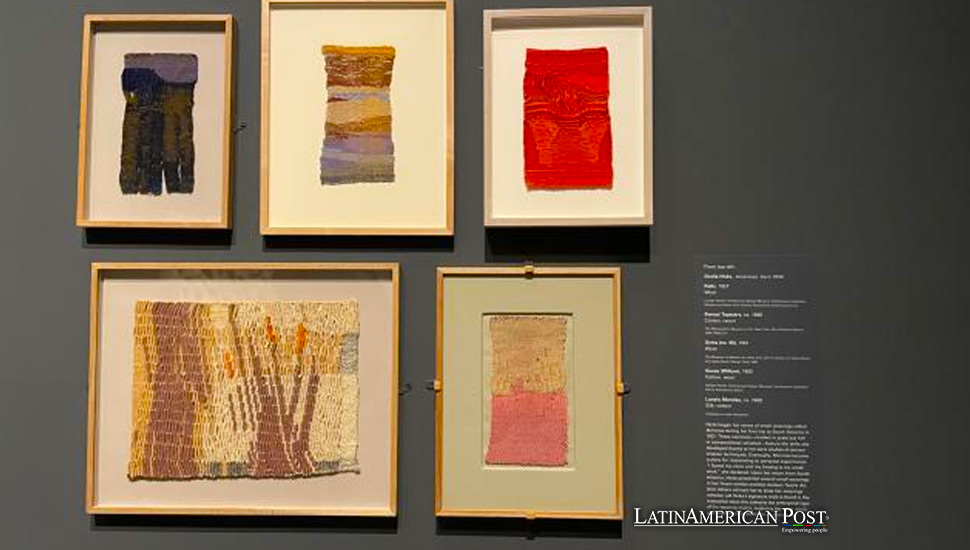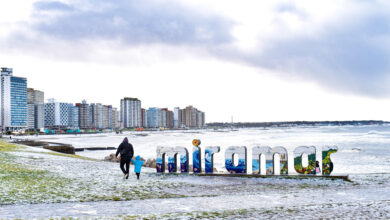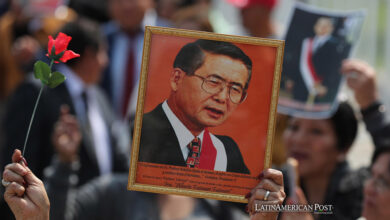Ancient South American Andean Weaves to Modern Art: A Textural Journey Across Time and Cultures

The intricate textiles of ancient Andean civilizations, including the Incas, have significantly influenced the innovative work of modern artists like Anni Albers, Sheila Hicks, Lenore Tawney, and Olga de Amaral, showcasing a blend of traditional techniques and contemporary abstraction.
Bridging Millennia, Cultures, and Continents:
In the heart of New York, The Metropolitan Museum of Art (Met) has unveiled an exhibition that bridges millennia, cultures, and continents. “Weaving Abstraction in Ancient and Modern Art,” running until June 16, offers more than 50 works illuminating the profound connection between the textiles of ancient Andean artists and the avant-garde creations of four 20th-century women artists. This exhibition not only celebrates the technical mastery and aesthetic beauty of these textiles but also underscores the enduring influence of Andean cultures on contemporary art forms.
The ancient Andes, a region encompassing modern-day Peru, Argentina, Chile, and Bolivia, was a cradle of textile innovation. Here, weaving was not just a craft but a sophisticated language of expression and identity. The Incas, with their empire stretching across the rugged Andes, were the zenith of this textile tradition, creating pieces that were both functional and symbolic, serving as attire, offering, and even a medium of communication through the quipu, a system of knotted cords used for record-keeping and narrative storytelling.
It’s within this rich tapestry of history that modern artists Anni Albers, Sheila Hicks, Lenore Tawney, and Olga de Amaral found inspiration. Albers, a German artist, and a pivotal Bauhaus movement figure is the bridge between ancient Andean weavers and contemporary textile art. Her work, deeply influenced by her study of Andean textiles, marries the Bauhaus ethos of functional art with the intricate patterns and techniques learned from the Andean tradition. Her piece “Black-White-Yellow” epitomizes this fusion, designed for industrial production yet deeply rooted in Andean weavings’ geometric abstraction and textural complexity.
Journey Through Time: Unfolding the Narrative of Textile Evolution
The exhibition’s narrative unfolds through the juxtaposition of ancient textiles and modern artworks, beginning with simple Andean weaves that date back 1,500 years. These pieces, characterized by their abstract and geometric designs, showcase the weavers’ skillful manipulation of warp and weft to create intricate patterns that resonate with the modern artists’ works on display. Joanne Pillsbury, one of the exhibition’s curators, highlights the chessboard-like textile gifted by an Inca emperor to his soldiers as a testament to the power of abstract geometric patterns in conveying messages of strength and unity, transcending language and cultural barriers.
Sheila Hicks, Lenore Tawney, and Olga de Amaral, each in their unique way, have expanded on Albers’ pioneering integration of Andean techniques into modern textile art. Hicks, influenced by her travels to South America, infuses her “Minimes” series with a dynamism and color palette that echoes the chaotic beauty of Andean landscapes. Tawney’s work, characterized by its architectural scale and open weave technique, and Amaral’s vibrant tapestries, which blend ancient weaving methods with modernist influences like Paul Klee, further illustrate the profound dialogue between ancient Andean weaving traditions and contemporary art practices.
This exhibition is more than a showcase of artistic talent; it is a testament to the enduring legacy of Andean civilizations and their impact on global art history. By highlighting the works of Albers, Hicks, Tawney, and Amaral alongside ancient Andean textiles, the Met not only pays homage to these pioneering women artists but also acknowledges the rich cultural heritage of the Andes that continues to inspire and influence artists around the world.
Beyond Art: The Influence of Andean Textiles on Culture and Identity
The influence of Andean textiles extends beyond art, touching upon broader themes of cultural exchange, innovation, and identity. As viewers traverse the exhibition, they are invited to reflect on the interconnectedness of human creativity across time and space, the universal language of patterns and textures, and how ancient traditions can inform and enrich modern artistic expression.
As Latin American countries continue to navigate their post-colonial identities, exhibitions like “Weaving Abstraction in Ancient and Modern Art” are potent reminders of the region’s rich cultural contributions to the global artistic landscape. They challenge us to reconsider the narratives of art history and the sources of our aesthetic and technical inspirations.
Also read: Colombia’s “Achura Karpa”: A Global Circus Fusion Honoring Ancestral Traditions
The Met’s exhibition is a vibrant dialogue between past and present, ancient and modern, showcasing the timeless beauty and complexity of Andean textiles and their profound influence on twentieth-century art. It is a celebration of cultural continuity and the transformative power of artistic exchange, highlighting the universal human drive to create, communicate, and connect through the medium of textiles. This exhibition honors the legacy of the Andean weavers and the modern artists they inspired and invites us to appreciate the intricate web of connections that binds humanity across the ages.





